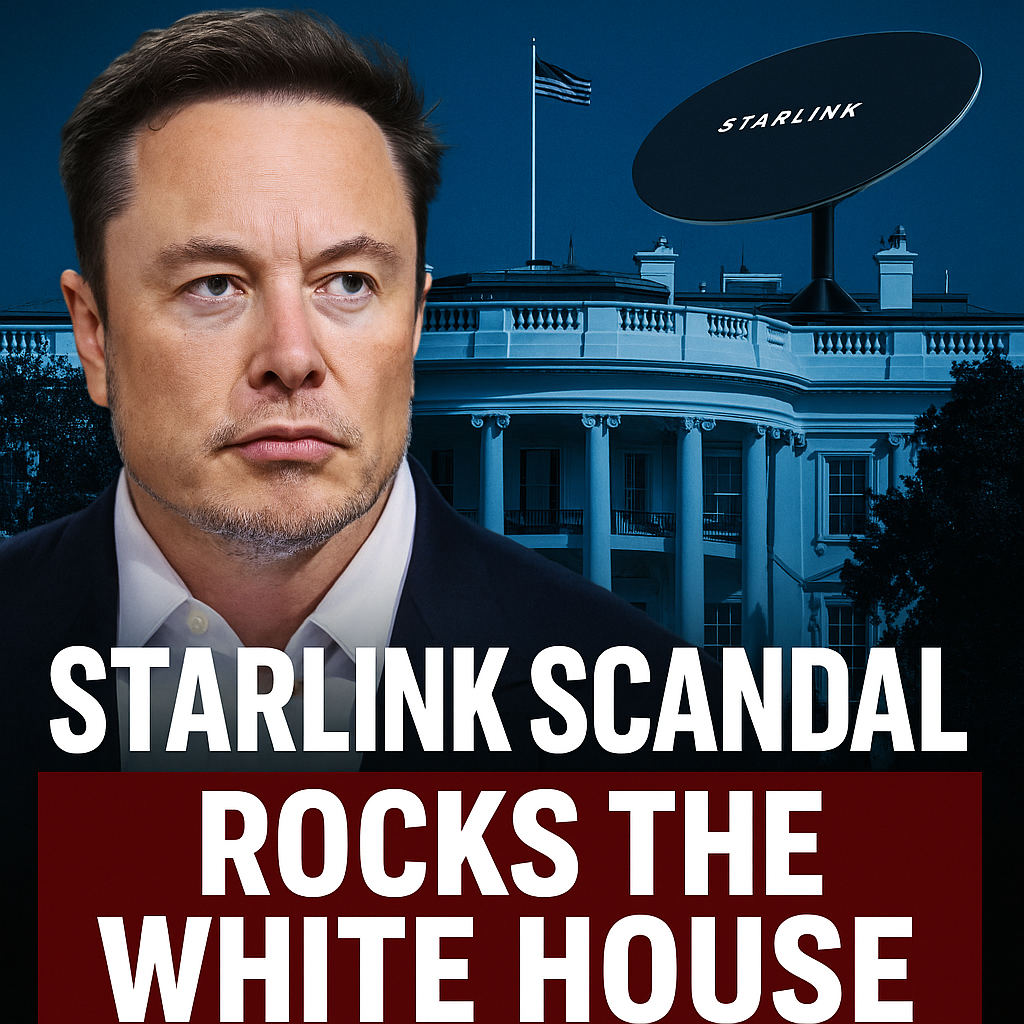WASHINGTON, D.C. — A Starlink Wi-Fi terminal quietly installed on the roof of the White House has ignited a firestorm of controversy, raising serious cybersecurity concerns and spotlighting Elon Musk’s growing influence inside the U.S. government. According to an explosive Washington Post report, operatives from the Department of Government Efficiency—commonly known as DOGE—set up the satellite system in mid-March 2025, allegedly with the blessing of the Trump administration, but without the knowledge of key national security officials.
The device, which provides high-speed, low-latency internet using Musk’s Starlink satellite network, was approved under the guise of fixing so-called “connectivity dead zones” within the White House complex. But insiders are now revealing that this explanation may have been a smokescreen to bypass existing White House cybersecurity protocols—potentially putting classified U.S. data at risk.
The Silent Setup: “No One Knew It Was There”
Multiple sources confirmed that White House IT security officials were not informed ahead of time about the installation, despite its location on the most secure government property in the nation. “Starlink doesn’t require anything,” one insider told the Post. “It allows you to transmit data without any kind of record or tracking.”
In essence, Starlink functioned like a ghost network—completely invisible to the White House’s traditional IT monitoring systems, which require users to be on full-tunnel VPNs at all times. “If you are not on the VPN, White House-issued devices can’t connect to the outside,” the source added. “With Starlink, that limitation disappears.”
The Sun Is Striking Back—Starlink Satellites Are Falling Victim to Surging Solar Storms
The implications are enormous. With this system in place, DOGE staffers could theoretically move data in and out of the White House without detection. This presents a terrifying question: What kind of data was transmitted?
DOGE’s Digital Freeway: A Gift to Spies?
While Starlink has revolutionized global internet connectivity—especially in rural and conflict-ridden regions—its decentralized, non-tracked architecture makes it a nightmare for secure installations like the White House. Experts say it could easily be exploited by bad actors, including foreign intelligence agencies.
“Installing a private satellite internet network inside the executive branch is an unthinkable risk,” said one cybersecurity analyst. “You’re creating an undetectable backdoor into the most sensitive databases in the country.”
And that may not be just speculation. In a separate whistleblower report filed in April, Daniel Berulis, an IT specialist with the National Labor Relations Board, accused DOGE of creating a “significant cybersecurity breach” after taking over his agency’s systems. According to Berulis, unusual spikes in data transfers and login attempts traced back to Russian IP addresses emerged shortly after Musk’s DOGE team gained access.
Even more alarming: DOGE operatives reportedly demanded that their actions go unmonitored, essentially opting out of all internal tracking mechanisms within the agency’s network.
SpaceX Launches 21 Powerful Starlink Satellites Amid Space Debris Concerns
“Starlink Guest” Still Active at 1600 Pennsylvania Avenue
Despite Musk’s high-profile fallout with Trump—a breakup that has been characterized by online mudslinging and political distancing—remnants of their partnership still linger. Visitors to the White House in recent weeks have reported seeing an active Wi-Fi network labeled “Starlink Guest” on their mobile devices while on the property.
If true, this raises serious questions about whether the Starlink terminal is still operational and who has access to it. The White House has not issued a formal statement on the matter, and the Secret Service downplayed the incident, with spokesperson Anthony Guglielmi stating that they “did not consider this matter a security incident or breach.”
Fallout in the Musk-Trump Alliance
The incident marks yet another twist in the Musk-Trump saga. Once political allies—Musk had been appointed Senior Advisor to the President and was spearheading government-wide cuts in spending and staffing—their relationship has soured dramatically. While Musk pushed forward with rapid digital reforms through DOGE, critics say those reforms came at the cost of national security hygiene.
Fallout Frenzy: Musk and Trump Declare War Over $4 Trillion Bill
And now, the cracks are showing. Accusations are flying, congressional hearings are looming, and Musk’s access to sensitive networks has reportedly been revoked. But the damage may already be done.
Was America’s Digital Front Door Left Wide Open?
This developing story paints a disturbing picture: a tech billionaire, wielding government power, circumventing protocol with cutting-edge tools that few understand and even fewer can monitor. If data was transmitted through Starlink—unseen and untracked—then there’s no telling what may have been accessed, copied, or leaked.
In an age where cyber warfare is the new battlefield, the Starlink episode could go down as one of the boldest IT breaches in executive history—not because of what was stolen, but because no one saw it happening in the first place.
What’s Next?
Capitol Hill is already rumbling. Multiple lawmakers are calling for an investigation into DOGE’s use of off-grid networks inside federal buildings. Meanwhile, privacy experts and national security hawks are warning that unless tighter controls are placed on private tech inside government agencies, another digital disaster may be only a satellite away.
As of now, one thing is certain: Starlink’s presence on the White House roof has made America’s most secure address the center of a growing scandal that’s likely to send political and cybersecurity shockwaves for months to come.




